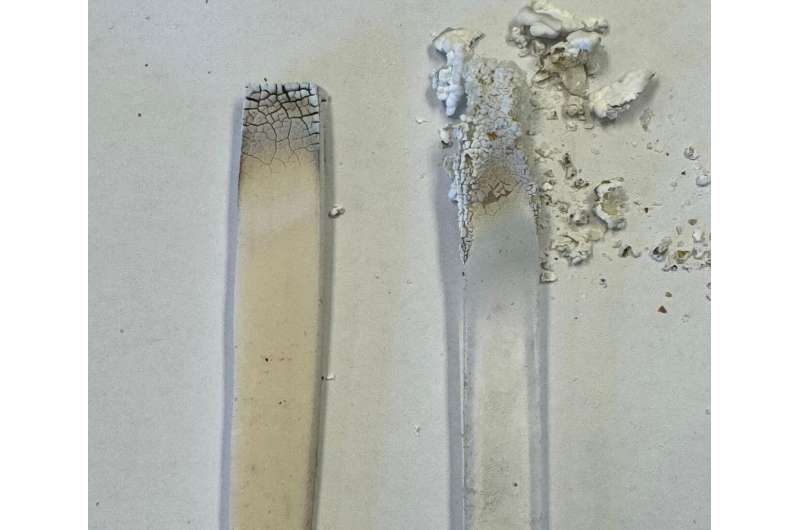This article has been reviewed according to Science X's editorial process and policies. Editors have highlighted the following attributes while ensuring the content's credibility:
fact-checked
trusted source
proofread
Researchers develop improved power pole insulation materials to prevent power pole-top fires

Engineers in Australia have found a new way to make power-pole insulators resistant to fire and electrical sparking, promising to prevent dangerous pole-top fires and reduce blackouts.
Pole-top fires pose significant challenges to power providers and communities worldwide. In March, pole-top fires cut power from 40,000 homes and businesses in Perth.
The 2020 Royal Commission into National Natural Disaster Arrangements found that power outages experienced by 280,000 customers from various energy providers during Black Summer fires were mainly triggered by events involving insulators and poles.
RMIT University Vice-Chancellor's Postdoctoral Fellow Dr. Tariq Nazir said these fires can occur when consecutive hot, dry and windy days are followed by damp and misty conditions.
"Dust and pollution builds up on power-line insulators, which enables electricity to spark and heat metal fixtures that can cause wooden power poles to catch fire," he said.
In collaboration with researchers at the University of New South Wales, Nazir has improved the performance and safety of insulation materials for power poles at the lab scale. Their results and analysis are published in the journal Advanced Composites and Hybrid Materials.
"Power utilities wash insulators on overhead power lines as a vital maintenance procedure to prevent problems like contamination and electrical sparking, which can cause pole-top fires and power outages," said Nazir from RMIT's School of Engineering.
"Our proposed silicone rubber composite material offers a potential solution that could save power companies time, maintenance resources and ultimately money from prevent damage to their assets."
The composite material comprises chopped fiberglass, aluminum hydroxide and a type of clay derived from volcanic ash as additives.
"Our innovation could serve as a protective coating or paint for ceramic and glass insulators, providing extra defense against environmental factors such as moisture, pollution and fire," Nazir said.
"We are keen to engage with fire-retardant coating manufacturers, electrical utilities, electrical insulation designers, manufacturers of electrical insulation products and regulatory agencies to further develop and prototype this work."
How is this innovation different?
Nazir said their research's novelty was in exploring the flame retardancy of insulator materials.
"Others are working mainly in electrical discharge resistance of material," he said.
"I am trying to achieve both sides, while maintaining the required electrical insulation level of composites."
With the help of prospective partners, the team will aim to transition to larger-scale production processes for commercial applications and conduct more comprehensive durability testing under simulated outdoor conditions.
"Application-specific testing will assess suitability for various scenarios, and integration with existing systems will be explored," Nazir said.
Nazir and his colleagues are behind another fire-protection innovation co-developed with the company Flame Security International—a fire-retardant paint that is already commercially available in Australia.
More information: M. Tariq Nazir et al, Enhancing flame and electrical surface discharge resistance in silicone rubber composite insulation through aluminium hydroxide, clay, and glass fibre additives, Advanced Composites and Hybrid Materials (2024). DOI: 10.1007/s42114-024-00874-x




















